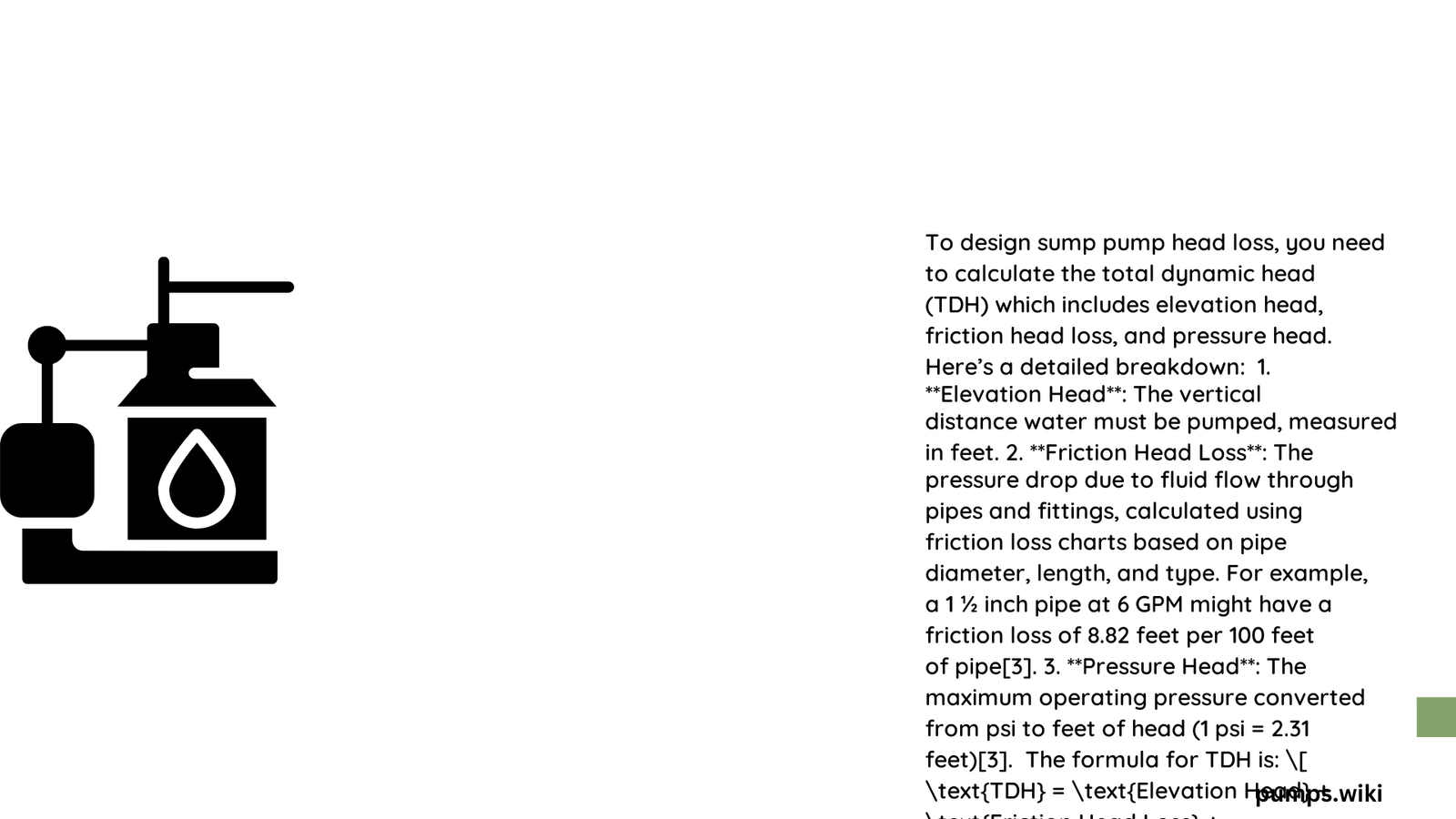Design sump pump head loss represents a critical engineering challenge involving complex hydraulic calculations that determine pump efficiency, system performance, and water management effectiveness. Understanding the precise mathematical relationships between static head, friction loss, pipe configurations, and discharge conditions enables engineers and technicians to optimize sump pump installations with maximum reliability and minimal energy consumption.
What Determines Sump Pump Head Loss?
Core Components of Head Loss Calculation
Head loss in sump pump systems emerges from multiple interconnected factors:
Static Head Fundamentals
- Vertical elevation difference
- Discharge point height
- Gravitational resistance
Friction Head Dynamics
- Pipe diameter
- Material characteristics
- Flow rate variations
Precise Calculation Methodology
Step-by-Step Head Loss Computation
- Measure Vertical Distance
- Calculate static head from pump base to discharge point
-
Record exact elevation changes
-
Analyze Pipe Configuration
- Determine pipe length
- Identify fitting types (elbows, valves)
-
Assess material friction coefficients
-
Calculate Total Dynamic Head (TDH)
[ \text{TDH} = \text{Static Head} + \text{Friction Head} ]
Quantitative Head Loss Analysis
| Pipe Diameter | Flow Rate | Head Loss per 100 Feet |
|---|---|---|
| 1¼ inches | 18 GPM | 5.25 feet |
| 3.5 inches | 400 GPM | 16.2 feet |
| 6 inches | 400 GPM | 1.1 feet |
How Do Pipe Characteristics Impact Head Loss?

Material and Diameter Considerations
Pipe Material Influence
- Steel: Higher friction coefficient
- PVC: Smoother internal surface
- Ductile Iron: Moderate friction characteristics
Diameter Effects
- Larger diameters reduce head loss
- Smaller diameters increase hydraulic resistance
Practical Optimization Strategies
- Minimize Pipe Fittings
- Reduce equivalent pipe length
-
Decrease friction losses
-
Select Appropriate Pipe Size
- Match pipe diameter to expected flow rates
- Consider long-term system performance
What Are Advanced Calculation Techniques?
Comprehensive Head Loss Formulas
[ \text{Friction Head} = \left( \text{Equivalent Length} + \text{Actual Length} \right) \times \frac{\text{Friction Loss per 100 Feet}}{100} ]
Computational Approach
- Use hydraulic engineering software
- Implement detailed simulation models
- Validate theoretical calculations
What Challenges Emerge in Sump Pump Design?
Common Design Limitations
- Space Constraints
- Cost Considerations
- Performance Requirements
Mitigation Techniques
- Advanced computational fluid dynamics modeling
- Iterative design optimization
- Comprehensive system performance testing
Conclusion: Precision in Pump Design
Successful sump pump head loss design demands meticulous attention to mathematical modeling, material selection, and system configuration. Engineers must balance theoretical calculations with practical implementation strategies.
Key Takeaways
- Understand comprehensive head loss components
- Utilize precise calculation methodologies
- Optimize system design through strategic interventions
Recommended Tools
- Hydraulic calculation software
- Precision measurement instruments
- Computational fluid dynamics platforms
Professional Recommendations
- Conduct thorough site assessments
- Perform multiple calculation iterations
- Validate theoretical models with practical testing
